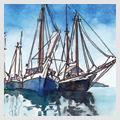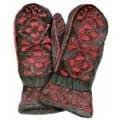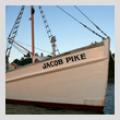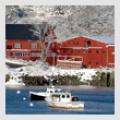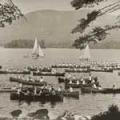The Sad Tale of Maine’s Extinct Sea Mink
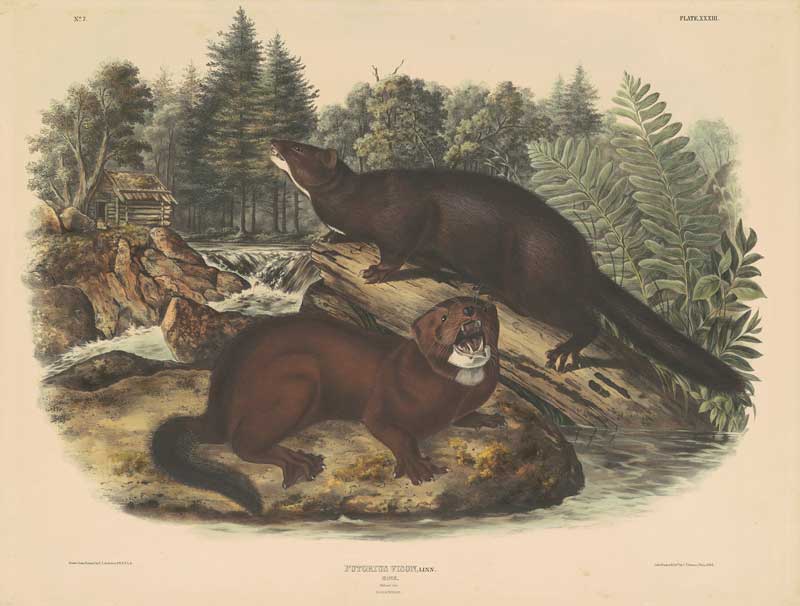
A species known as the sea mink (Neogale macrodon) went extinct in Maine only 150 years ago. Never heard of it? You’re not alone. Most Mainers haven’t. Though it held immense cultural significance for Indigenous communities and European fur traders before its extinction, it has since been forgotten. Scientists want to know why. How different was the sea mink from the still-living American mink? What else was lost after the sea mink went extinct? And what does its extinction mean for the coast of Maine today?
The sea mink, once found from the Isles of Shoals to New Brunswick, went extinct in the mid-1800s due to over harvesting for their fur. Twice the size of today's American mink (its closest living relative), the sea mink was highly desired for its large pelt. Reddish in color, it smelled like the fish it hunted. Sea mink lived in rock dens along the shore of coastal islands and spent most of their time hunting in the frigid ocean water or sleeping in dens. Brewer fur buyer Manly Hardy described in a 1903 report to the Smithsonian Institution how the mink were hunted. Rather than being trapped as mink are today, the animals were prodded out of their dens with crowbars or dogs and shot, he wrote.
During the 1800s, the popularity of mink coats in Europe and America demanded high numbers of mink pelts. Depending on the size and style, one coat required 60-200 individual pelts from smaller mink such as the “woods mink.” Being twice the size of the mink from interior Maine, the sea mink’s pelt cut this number in half, which made them a preferred quarry.
Hardy’s 1903 report described the animals from first-hand experience. In the process explaining why they were hunted to extinction, Hardy, who handled much of the region’s fur trade, wrote that the animals were “extremely fat, and the skins had an entirely different smell from that of the woods mink.” He added, “In the old days, when mink were judged by size instead of by fineness and color […] these sea mink used to bring considerably more than others on account of their great size. On this account they were persistently hunted.” Hardy also noted that, “As the price of mink rose, they were hunted more and grew scarcer, till in the [eighteen] sixties, when mink skins brought $8 or $10 apiece, parties who made a business of hunting nearly or quite exterminated the race.”
All that remains of the sea mink today are its bones and teeth, found in the thousands of archaeological sites that dot the coast of Maine. Archaeologist Dr. Bonnie Newsom of the University of Maine leads excavations at a site near Machias as part of the University of Maine archaeological field school. These huge shell heaps—piles of shells left behind after shellfish were harvested—were created by the ancestors of Wabanaki people, of whom Newsom is a descendant. She leads the field school with the understanding that the people who created these heaps are to be honored, as are the gifts and stories they left behind. Due to rising sea levels and increased storm severity, heaps like this are eroding into the ocean along with the cultural artifacts they contain. The Maine Midden Minders program is a citizen science initiative aimed at monitoring and mitigating the effects of climate change on middens (volunteers are urged to participate and can sign up at https://umaine.edu/middenminders/).
The layers of these shell heaps represent different periods of time and use. Some have been dated back 5,000 years and some are as young as a few hundred years old, as shown with the presence of European artifacts like glass beads and metal objects. Common items found in middens include stone flakes from tool manufacturing, charcoal, potsherds, and animal bones, including those of the sea mink.
 Daniel Webster Prentiss made these drawings of skull parts from an animal he described as an extinct sea mink, Lutreola macrodon. The bones were found in a shell heap in Brooklin, Maine. “The difference in size of the teeth, the angle of the nasals, and the position of the carnassials justify me, I believe, in the absence of intermediate forms, in describing it as a new species,” he wrote in 1878 in an article published in the Proceedings of the U.S. National Museum. Image taken from the Biodiversity Heritage Library
Daniel Webster Prentiss made these drawings of skull parts from an animal he described as an extinct sea mink, Lutreola macrodon. The bones were found in a shell heap in Brooklin, Maine. “The difference in size of the teeth, the angle of the nasals, and the position of the carnassials justify me, I believe, in the absence of intermediate forms, in describing it as a new species,” he wrote in 1878 in an article published in the Proceedings of the U.S. National Museum. Image taken from the Biodiversity Heritage Library
The sea mink has been the subject of taxonimic debate for over 100 years. Based on his examination of sea mink bones, archaeologist Daniel Webster Prentiss declared the sea mink a new species in 1903 for the Smithsonian’s National Museum of Natural History. Later, in 1911, Frederick Brewster Loomis, a paleontologist and professor at Amherst College supported this hypothesis based on skeletal and dental characteristics. Both noted the large size of the sea mink’s teeth, for which it earned its scientific name, macrodon. Princeton student Rebecca Sealfon noted in 2007 that the wide shape of the sea mink’s teeth indicated a diet consisting of hard objects like clams and lobster. There are historical observations of sea minks eating fish and crustaceans in the intertidal zone and close to shore.
But not everyone agrees that sea mink were a separate species.
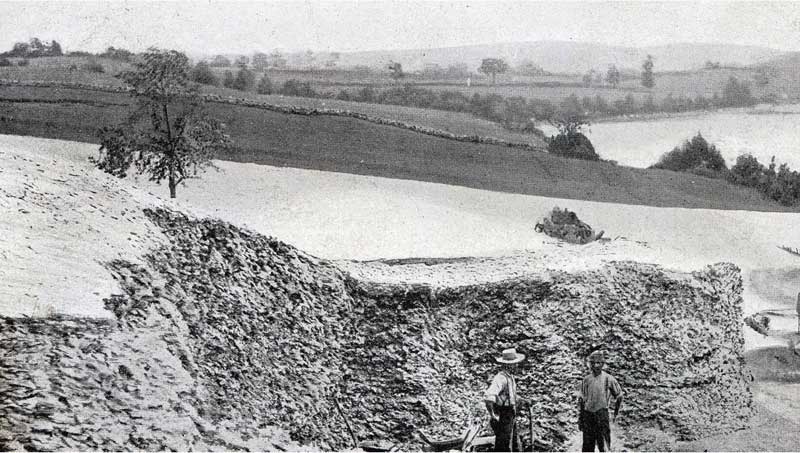 A vintage image of the Glidden Shell Heap, in Damariscotta, Maine. Image HM7182.205, Hudson Museum, University of Maine
A vintage image of the Glidden Shell Heap, in Damariscotta, Maine. Image HM7182.205, Hudson Museum, University of Maine
Fannie Hardy Eckstorm, the daughter of fur buyer Manly Hardy, challenged the species hypothesis in 1935 when she wrote that the sea mink was simply a coastal subspecies or variety of the common American mink. She cited her father’s experiences and knowledge of sea mink, and his opinion that they were indeed larger, but similar in all other aspects. Regarding the claims of the paleontologists, Eckstorm wrote, “[...] of course an animal twice as large as another of the same sort would have a bigger skull and bigger teeth!” Richard H. Manville supported Eckstorm and her father’s opinions in 1966, believing that the early paleontological reports had exaggerated the measurements. The two argued that although the two populations were different, they were not different enough to be considered separate species.
Today, a group of scientists and community members, supported by the National Science Foundation, is working to understand the role the sea mink played in Maine. Partnerships with tribal representatives including Donald Soctomah (Tribal Historic Preservation Officer for the Passamaquoddy Tribe) as well as governmental representatives like Shevenell Webb (Maine state furbearer biologist) and Dr. Arthur Spiess (senior archaeologist at the Maine Historic Preservation Commission) ensure that this project is conducted with multiple perspectives. By combining the genetic information from the bones found in shell heaps along with chemical information about diet, bone and tooth size, historical documents, and modern ecological knowledge, the collaborators are unraveling the sea mink’s mysterious life and extinction.
Dr. Courtney Hofman (Oklahoma University), one of the principal investigators of this five-year project, co-directs a DNA lab in Oklahoma, where she and her team extract DNA from ancient bones and teeth to learn more about the past. The Oklahoma University researchers are now extracting ancient DNA from the sea mink bones from archaeological sites. In collaboration with Dr. Torben Rick at the Smithsonian, they are returning to the archaeological collections originally used by Prentiss in the early 1900s to add genetic data to the sea mink species question. If the sea mink was a distinct species, then it should be grouped separately from the American mink on a family tree. Genetic studies should reveal the lineages of the sea mink and modern American mink, and the extent of the genetic loss that the sea mink’s extinction entailed.
But genetic data is not the only way biologists measure biodiversity loss. They also consider ecosystem function, or the ecological loss following extinction. This includes understanding what the animal ate, what ate it, where it lived.
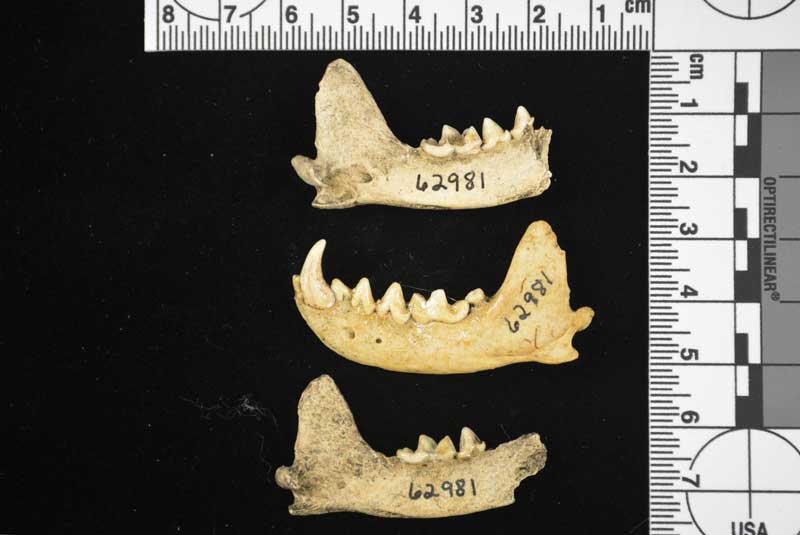 Three sea mink (Neogale macrodon) jaw bones. Museum of Comparative Zoology, Harvard University, © President and Fellows of Harvard College
Three sea mink (Neogale macrodon) jaw bones. Museum of Comparative Zoology, Harvard University, © President and Fellows of Harvard College
When biologists such as Dr. Alexis Mychajliw (Middlebury College) study the diet of extinct animals, such as the sea mink, they use the remaining chemical signatures in 1,000-year-old bones to reconstruct past food webs, since they cannot observe the animals eating. They can estimate the ratio of the amount of marine fish the sea mink ate to the amount of muskrat, consumed, for example. More marine fish would suggest a marine diet, whereas more muskrat would signify a terrestrial diet. If the research reveals a distinction between the chemical diets of sea mink and American mink, that would show they were living in different habitats, using different resources.
If they were eating the same foods, however, that could mean that the two species were more similar than previously thought, and that maybe Manville and Hardy were correct in saying that the sea mink was really only a coastal version of the American mink.
If the sea mink was only a coastal subspecies of the American mink that once lived on the coast of Maine, why does it matter that the sea mink went extinct?
Because the sea mink was a culturally significant animal. The Passamaquoddy word for sea mink is supeqi-ciyahkehsuwok, suggesting that Native Americans consider them distinct from the American mink, which is called ciyahkehsuwok. European trappers noted the difference and preferably harvested the sea mink due to its size and the thickness of its pelt.
Today, American mink have been observed in the intertidal zone, hunting and swimming. They eat marine fish, clams, and lobsters. Linda Welch, a U.S. Fish and Wildlife Services biologist working to protect seabird breeding colonies in Maine, has noted that American mink have been hunting puffins. Puffins are a protected species in Maine, making the issue of mink on the islands a contentious one. Minks labeled as pests by conservationists and community members are being trapped in the breeding colonies and killed, although mink have coexisted with puffins and have been eating seabirds for thousands of years.
As an islander myself, I care deeply about the human and non-human communities that call the coast home. I hope the story of the sea mink will inspire my neighbors to learn about the world around them and to consider even the “pests” in their conservation conversations. And I hope that someday we can reclaim the mink into our care and prevent future coastal extinctions.
Olivia Olson is a graduate student at the Climate Change Institute at the University of Maine. Under the advisorship of Dr. Bonnie Newsom, Olivia studies the zooarchaeological record in Acadia National Park. She grew up on Islesboro and spent her college career in Vermont before returning to Maine.
Related Articles
Share this article:
2023 Maine Boat & Home Show

Join Us for the Maine Boat & Home Show!
Art, Artisans, Food, Fun & Boats, Boats, Boats
August 11 - 13, 2023 | On the waterfront, Rockland, Maine
Click here to pre-order your tickets.
Show is produced by Maine Boats, Homes & Harbors magazine.







